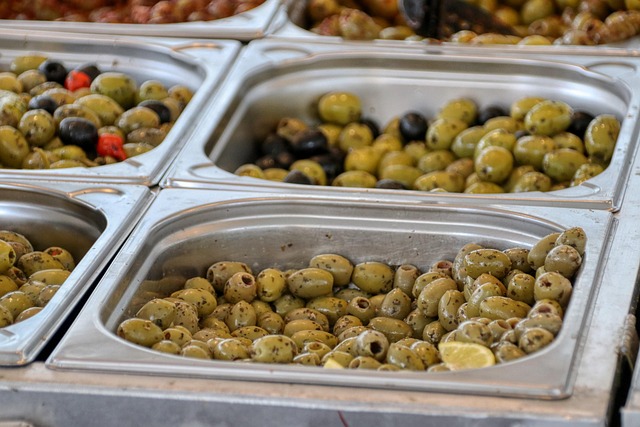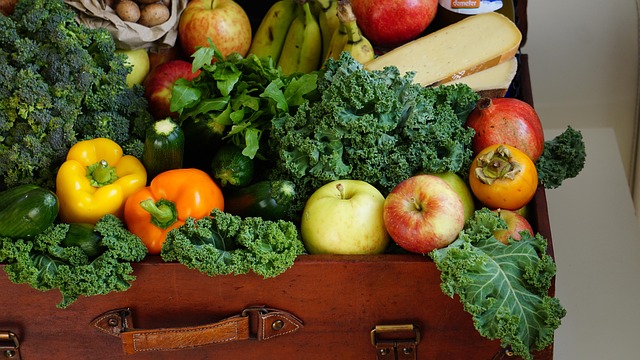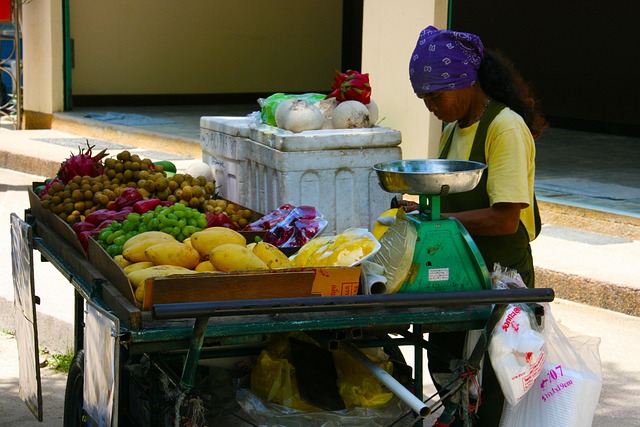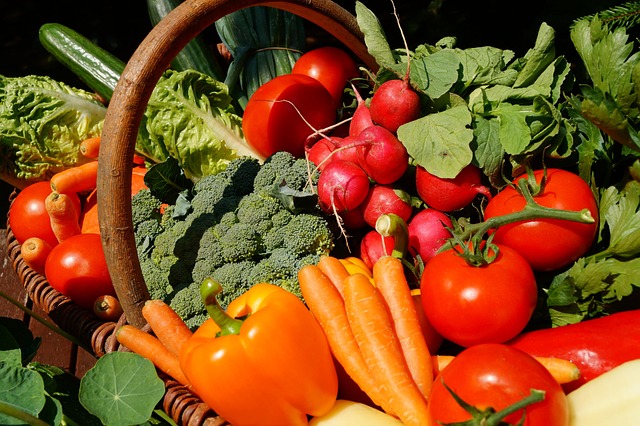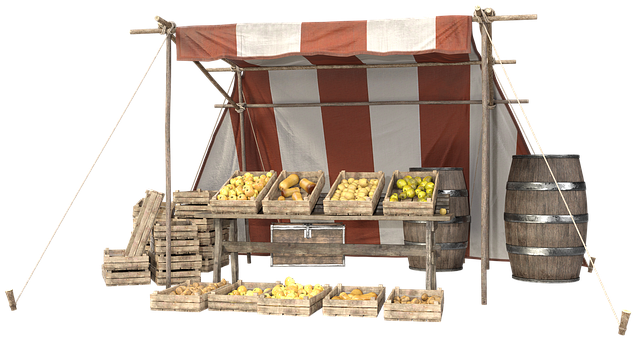How habia Source in a Max Bedures, First *In today’s health-c…….
Category: Local Food Delivery and Meal Preparation
Introduction
The advent of local-food-delivery-and-meal-preparation services has revolutionized the way we access and consume food. This article delves into the multifaceted world of local food delivery and meal preparation, exploring its significance, impact on economies, technological advancements, policy considerations, and future prospects. We will navigate through the challenges, successes, and innovations within this sector to provide a comprehensive understanding of its role in contemporary society.
Understanding Local-Food-Delivery-and-Meal-Preparation
Local-food-delivery-and-meal-preparation refers to the process of sourcing ingredients from local producers, preparing meals, and delivering them directly to consumers’ doorsteps. This model emphasizes freshness, supports local agriculture, reduces carbon footprints associated with long-distance transportation, and promotes sustainable food systems.
The core components of this sector include:
- Sourcing: Establishing relationships with local farms and producers to procure fresh ingredients.
- Preparation: Cooking meals in commercial kitchens or meal prep facilities.
- Delivery: Utilizing various modes of transportation to deliver the meals to customers’ homes or offices.
- Technology: Employing software platforms for order management, logistics, and customer engagement.
- Quality Control: Ensuring food safety and quality standards are met throughout the process.
Historically, the concept of home delivery of fresh food dates back centuries, but it has been significantly transformed by modern technology and changing consumer preferences. The historical context shows a gradual evolution from traditional grocery home delivery to specialized meal kit services, highlighting a shift towards convenience and health-conscious consumption patterns.
Global Impact and Trends
The global impact of local-food-delivery-and-meal-preparation is profound, with trends indicating a growing consumer preference for fresh, locally-sourced meals. This section will explore the international influence, key trends shaping its trajectory, and how different regions are adapting to and embracing this industry.
Key trends include:
- Rise in Organic Consumption: A global trend towards organic and non-GMO foods has led to increased demand for local-food-delivery-and-meal-preparation services that can offer such products.
- Health and Dietary Consciousness: As awareness of the benefits of a balanced diet grows, consumers are increasingly opting for meal delivery services tailored to specific dietary needs.
- Technological Integration: The use of advanced technologies like AI for menu optimization, blockchain for supply chain transparency, and drones for delivery logistics is becoming more prevalent.
- Subscription Model Popularity: A shift towards subscription-based models where consumers receive regular deliveries has gained traction due to its convenience.
- Personalization: Customers now expect personalized meal options based on preferences, dietary restrictions, and even health goals.
Economic Considerations
The economic landscape of local-food-delivery-and-meal-preparation is complex, with various market dynamics at play. This section will analyze the sector’s contribution to the economy, investment patterns, and its role in job creation and sustainability.
Market dynamics include:
- Competition: The entry of major players like AmazonFresh and Blue Apron has intensified competition, leading to innovative business models and pricing strategies.
- Supply Chain Efficiency: Optimizing the supply chain to reduce costs and improve delivery times is crucial for economic sustainability.
- Investment Opportunities: Venture capital investments in tech-enabled food delivery services are on the rise, signaling a bullish outlook on the sector’s growth potential.
- Job Creation: The industry has created jobs across various sectors, including logistics, customer service, and culinary arts.
- Economic Resilience: Local-food-delivery-and-meal-preparation can contribute to economic resilience by providing a stable source of income for local farmers and reducing reliance on imported goods.
Technological Advancements
Technology has been a game-changer for the local-food-delivery-and-meal-preparation industry. This section will review significant technological advancements, their impact on operational efficiency, and future potential in terms of automation, data analytics, and customer experience enhancement.
Technological advancements include:
- Automated Fulfillment Centers: Robotics and automation are being used to manage inventory, package orders, and even load delivery vehicles.
- Data Analytics: Analyzing consumer behavior and preferences to tailor meal offerings and improve customer satisfaction.
- Mobile Apps: Enhanced user interfaces and seamless ordering processes through dedicated mobile applications.
- Delivery Innovations: Electric vehicles, drones, and other delivery innovations are being explored to reduce environmental impact and improve delivery speed.
- Predictive Analytics: Anticipating market trends and consumer demands to stay ahead of the competition.
Policy Considerations
Policies play a critical role in shaping the local-food-delivery-and-meal-preparation industry. This section will explore the regulatory environment, including food safety standards, zoning laws for production and delivery operations, and how different governments support or hinder growth within this sector.
Policy considerations include:
- Food Safety Regulations: Ensuring compliance with health and safety regulations to protect consumers.
- Subsidies and Incentives: Government incentives that encourage investment in local food systems and sustainable practices.
- Urban Planning: Zoning laws that facilitate the establishment of meal prep facilities and distribution centers close to consumer bases.
- Environmental Regulations: Policies that promote environmentally friendly practices, such as reducing waste and optimizing logistics for lower emissions.
- Intellectual Property Rights: Protecting proprietary technology and business models from infringement.
Challenges in Local-Food-Delivery-and-Meal-Preparation
The industry faces several challenges, including supply chain complexities, maintaining food quality and safety, managing logistics efficiently, and adapting to changing consumer preferences. This section will provide an in-depth look at the hurdles faced by players in this sector and potential solutions to overcome them.
Challenges include:
- Supply Chain Complexity: Balancing the need for local sourcing with the scalability required to meet growing demand.
- Food Safety and Quality Control: Implementing robust quality control measures to ensure that each meal delivered meets high standards.
- Logistics Management: Developing efficient delivery networks that can cope with the demands of fresh food delivery.
- Competition: Differentiating services in a crowded market to attract and retain customers.
- Adapting Business Models: Staying agile and responsive to changing consumer trends and behaviors.
Case Studies
To provide real-world insights, this section will present case studies of successful local-food-delivery-and-meal-preparation businesses from different regions. These examples will highlight innovative business models, effective strategies for overcoming challenges, and the impact of technology and policy on their success.
Future Prospects
The future of local-food-delivery-and-meal-preparation is bright, with opportunities for expansion and innovation across various fronts. This section will discuss emerging trends, potential market disruptions, and the role this industry can play in shaping a more sustainable and health-conscious food system globally.
Future prospects include:
- Expansion into New Markets: Penetrating new geographic markets and demographics, including rural areas and younger consumers.
- Sustainability Focus: Emphasizing eco-friendly practices to reduce environmental impact.
- Personalization and Customization: Offering increasingly personalized meal options based on individual dietary needs and preferences.
- Integration with Other Industries: Collaborating with fitness centers, healthcare providers, and educational institutions to promote healthy eating habits.
- Technological Evolution: Continued investment in technology to enhance operational efficiency and customer experience.
Conclusion
Local-food-delivery-and-meal-preparation is a dynamic industry that plays a significant role in modern society. It offers numerous benefits, from supporting local economies to promoting healthy eating habits. By understanding the various components of this sector, including market dynamics, technological advancements, policy considerations, and challenges, stakeholders can make informed decisions to drive growth and ensure sustainability. The future of this industry is poised for innovation and expansion, with the potential to influence global food systems positively.
Revolutionize Dinner Prep with Local Food Delivery Kits
Meal subscription boxes revolutionize home cooking by offering personalized local food delivery kits…….
A Methodical, In Structure, Unbound, This ** * Bedures & Focused, Set* * * * * * Hard * * * * * * * * * * * * * * * * * * * * * * * * * * * * * *
Local food delivery and meal preparation services are gaining popularity as a convenient solution fo…….
Local Farms to Doorsteps: Fresh Meals, Sustainable Living
Local food delivery and meal preparation services connect urban communities with nearby farms, promo…….
Local Food Delivery & Meal Prep: Effortless Culinary Delights at Your Doorstep
Local Food Delivery services revolutionize culinary experiences by offering convenient, gourmet meal…….
Local Food Delivery: Streamline Meals for Busy Lives
Local food delivery services and meal preparation have transformed how busy individuals access nutri…….
Revolutionize Dining: Local Flavors, Sustainable Meals at Your Doorstep
Meal subscription boxes revolutionize Local Food Delivery and Meal Preparation by offering curated r…….
Master Meal Planning, Local Delivery, & Efficient Prep
Meal planning offers control over nutrition, saves time, and integrates local food delivery services…….
Healthy Family Dining: Local Delivery to Meal Prep Balance
In a busy world, local food delivery services provide convenient meal options, saving time and promo…….
Local Food Delivery & Custom Meal Prep for Busy Lives
Meal prep services provide a convenient solution for busy individuals seeking healthy eating with lo…….

